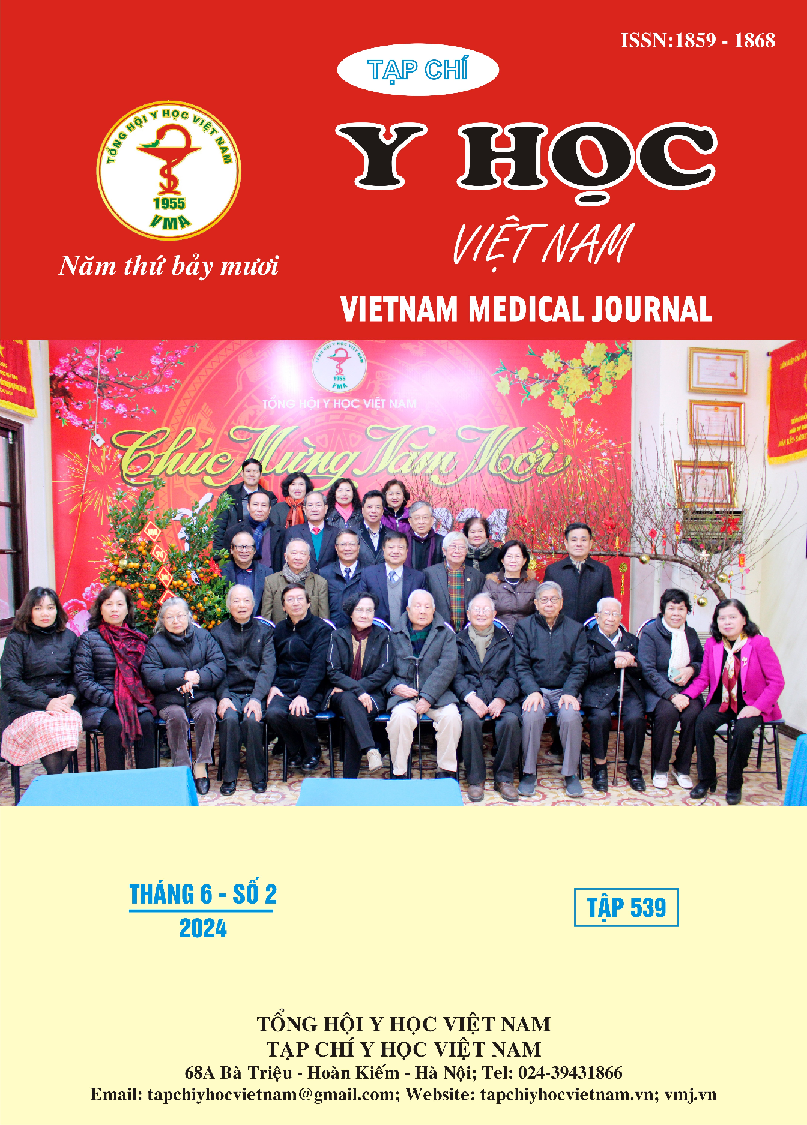SURVEY OF INSOMNIA IN PATIENTS AFTER STROKE AT CAN THO HOSPITAL OF TRADITIONAL MEDICINE IN 2023
Main Article Content
Abstract
Background: Post-stroke insomnia (PSI) is a very common complication in stroke patients. Surveying insomnia in patients after stroke to describe clinical characteristics in patients with insomnia after stroke, is a premise to improve the quality of life in people with post-stroke impairment effectively and long-term.. Objectives: Description of clinical features in patients with insomnia after stroke. Materials and methods: The cross-sectional descriptive study was analyzed with all post-stroke patients being treated at Can Tho Hospital Of Traditional Medicine from 11/2022 to 11/2023. Results: In a total of 103 post-stroke insomnia patients in our study, five clinical types identified according to traditional medicine accounted for the proportion and main symptoms respectively: Hyperactivity of fire due to yin deficiency 40.8% (42/103); Deficiency of both the heart and spleen 27.2% (27/103); Internal disturbance of phlegm-heat 16.5% (19/103); Liver-qi stagnation transforming into fire accounts for 9.7% (14/103); Heart deficiency with timidity 5.8% (6/103). Conclusion: In the study, the clinical form of insomnia with the highest rate was Hyperactivity of fire and the lowest rate was the Heart deficiency with timidity form.
Article Details
Keywords
Post-stroke insomnia, PSI, PSQI.
References
2. Baylan, S., Griffiths, S., Grant, N., Broomfield, N. M., Evans, J. J., & Gardani, M. (2020), “Incidence and prevalence of post-stroke insomnia: A systematic review and meta-analysis”, Sleep medicine reviews, 49, pp. 101–222. https://doi.org/10.1016/j.smrv.2019.101222
3. Karaca B. (2016). Factors Affecting Poststroke Sleep Disorders. Journal of stroke and cerebrovascular diseases: the official journal of National Stroke Association, 25(3), 727–732. https://doi.org/10.1016/j.jstrokecerebrovasdis.2015.11.015
4. Pérez-Carbonell, L., & Bashir, S. (2020). Narrative review of sleep and stroke. Journal of thoracic disease, 12(Suppl 2), S176–S190. https://doi.org/10.21037/jtd-cus-2020-002
5. 邓爱军, 姜瑞雪, 马作峰 (2015), “不寐的中医证型及证素分布特点的文献研究[J]”, 中国中医药现代远程教育, 13(07), 147-149.
6. 丁宇坤,高雅,郭建波 (2017), “例失眠症证候要素及靶位分析[J]”, 北京中医药, 36(12), 1095-1097.
7. 侯杰军, 路亚娥, 吕予 (2019), “ 中医药治疗失眠临床研究进展[J]”, 陕西中医, 40(02), 270-272.
8. 刘东生, 连新福, 袁少英 (2015), “原发性失眠症中医证候群筛选的研究[J]”,中国当代医药, 22(04).
9. 中医中医科学院失眠症中医临床实践指南课题组.失眠症中医临床实践指南(WHO/WPO)[J].世界睡眠医学杂志,2016,3(01):8-25.
10. 中华人民共和国卫生部. 中药新药临床研究指导原则(第一辑)[M]. 1993:186.


